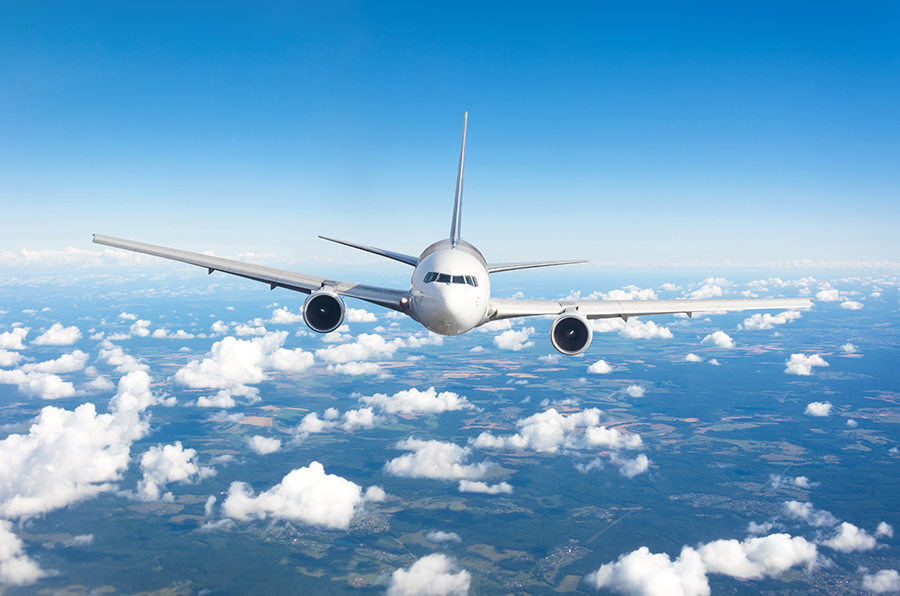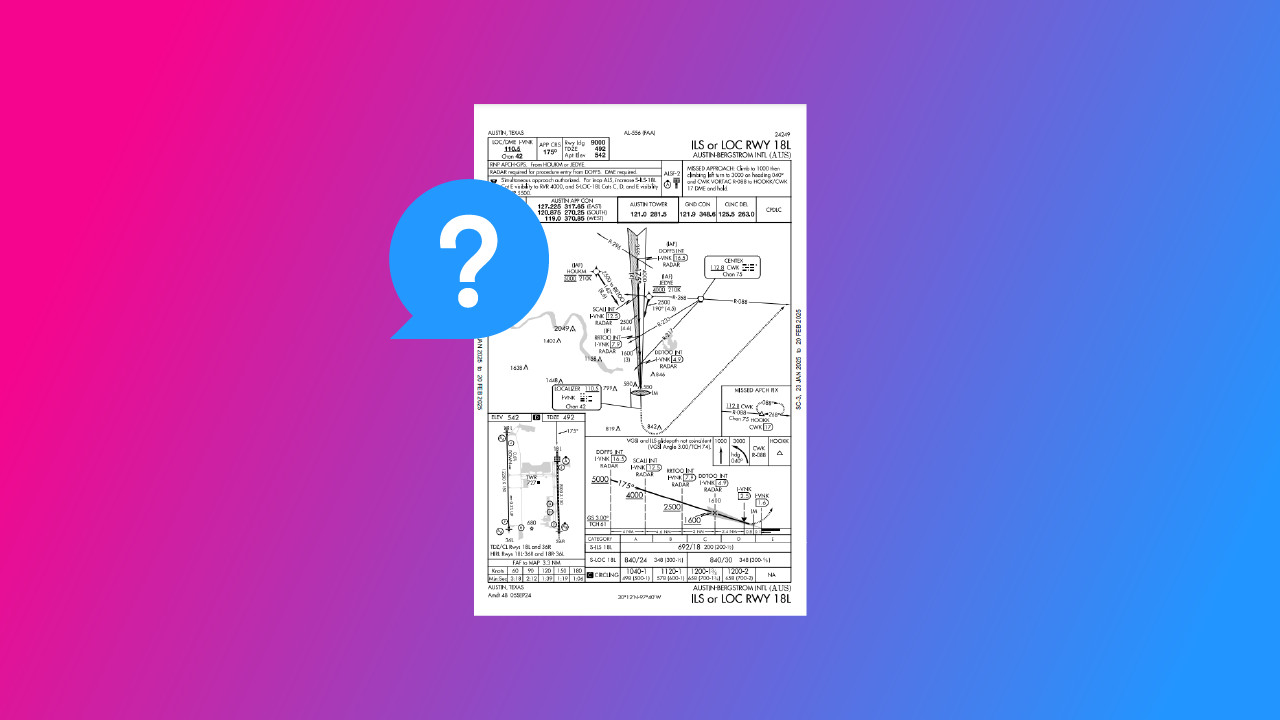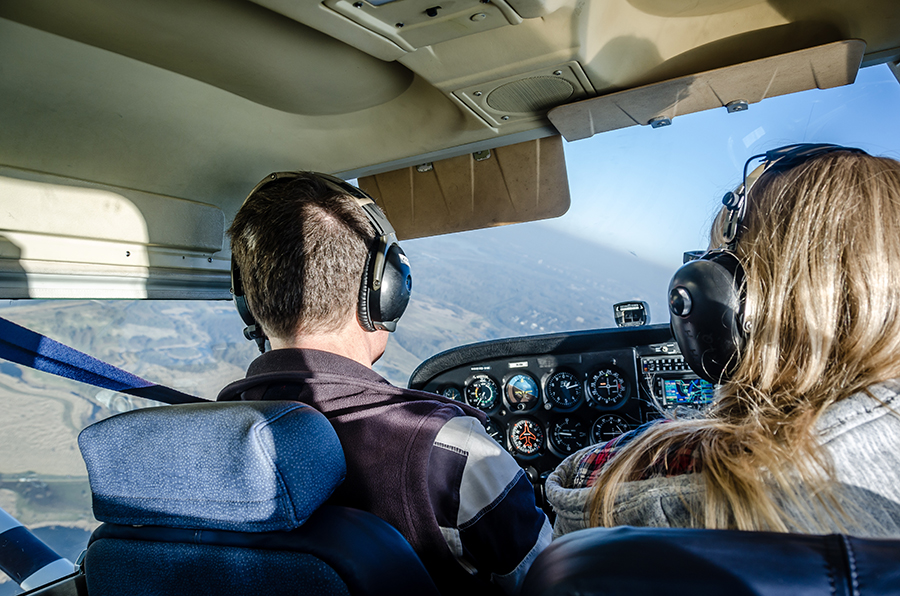-
What is Airplane Stability?
-
Terms You Need to Understand
- What Are the 3 Directions of Stability? - Airplane Axes
- Center of Gravity
- Center of Lift
-
Airplane Stability Easily Explained
- Positive, Neutral, or Negative - The Different Types of Airplane Stability
- Static Airplane Stability Vs. Dynamic Airplane Stability
-
What Affects Aircraft Stability?
-
How Do Airplanes Maintain Stability?
-
How to Ensure Aircraft Stability
-
Final Thoughts…
When flying, aircraft have to be controllable and predictable. How this is achieved is through airplane stability. There are many things to consider when discussing the stability of the aircraft. Still, when you get into it, the underlying concepts are actually pretty simple. Today we will talk you through aircraft stability, thoroughly explain some technical terms, and discuss things that will affect airplane stability.
What is Airplane Stability?
Airplane stability is used to describe how the airplane will act when subjected to an outside disturbance, either natural or due to control inputs. There are two basic types of stability in aircraft; static and dynamic. These are further subdivided into positive, neutral, or negative stability.
It should be no surprise that different airplanes have different characteristics, and airplane stability plays a big part in this.
Think about it…
A fighter jet handles completely differently than a large airliner. One of the main reasons for this is how stable the aircraft is. In fact, fighter jets are designed to be inherently unstable. In contrast, training aircraft are built to be almost too stable.
Due to the highly dynamic nature of flying, the airplane can be maneuvered through three dimensions in an ever-changing picture. So, to make things simple, when discussing aircraft stability, we use three basic axes to determine what is going on at a given time.
We combine these axes with a couple of different reference points.
Understand these axes and the reference points, and you’ll understand airplane stability.
Here’s what you need to know…
Terms You Need to Understand
On the face of it, airplane stability can appear slightly daunting. There is so much going on. However, by understanding some basic concepts, you’ll be able to predict aircraft behavior in all circumstances.
Here’s a quick rundown of some technical terms that you’ll need to know when discussing airplane stability: –
What Are the 3 Directions of Stability? – Airplane Axes
First, we need to understand airplane axes.
Relax, it’s really simple, and only three of them exist.
You can think of airplane axes as ‘skewers’ through the aircraft. The airplane will move around these axes, utilizing the principle of flight. How the airplane behaves around these axes will determine how stable it is.
The axes are as follows: –
The Longitudinal Axis
This ‘skewer’ is inserted through the nose and pokes out of the back of the tail. The airplane will roll around this axis.
The Lateral Axis
This pivot point runs from one wing tip to the other through the middle of the aircraft. The airplane pitches about this axis.
The Vertical Axis
As the name suggests, this axis goes straight down through the airplane’s middle. The airplane will yaw around this axis.
However, there is something we need to point out…
When discussing airplane stability, you really need to be aware of something. Stabilities describe how the axes themselves move, not the aircraft rotation around them.
A quick example?
While the airplane moves around the longitudinal axis in roll, longitudinal stability actually describes how the longitudinal axis moves up and down in pitch.
It can get confusing, so to make life easy, here is a quick table detailing which axes move in which direction.
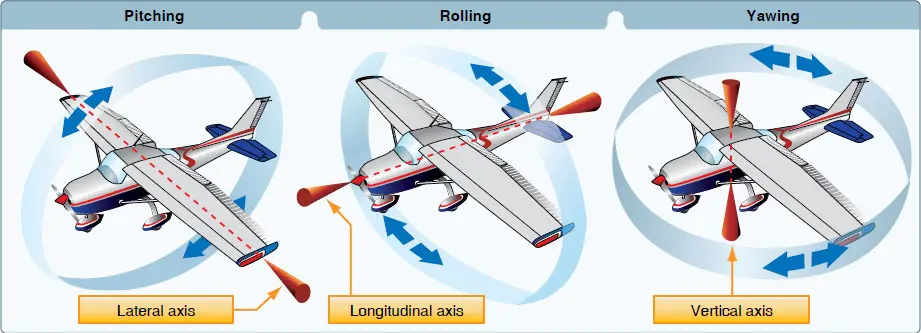
| Name of Aircraft Stability | Describes Airplane Behavior In: – | Aircraft Moves About the: – |
| Longitudinal Stability | Pitch | Lateral Axis |
| Lateral Stability | Roll | Longitudinal axis |
| Vertical Stability | Yaw | Vertical Axis |
There are two other elements at play when discussing airplane stability. They are:
Center of Gravity
The center of gravity serves a few purposes in determining the airplane’s stability. It is:
- The meeting point of all three axes is normally located somewhere in the middle of the airplane.
- The point around which the airplane will turn and maneuver.
- The area through which all the combined weight of the airplane acts.
You can consider the center of gravity (or CG if you want to sound all geeky) as the balance point of the airplane. If you could mount an airplane on a large spike, provided this spike sat under the center of gravity, the airplane would be perfectly in balance.
Center of Lift
The center of lift is a term that describes the resultant forces created by aerodynamic surfaces.
Obviously, working out how much lift the wing produces at different points is tricky. Engineers add all of these forces together and then work out where, on average, the forces combine on the wing to produce lift.
This resulting calculation produces a vector. This normally acts at a 90° angle to the wing’s chord line.
So, to summarize, we have the following: –
- Three axes that move in different directions
- A pivot point called the center of gravity
- A force called the center of lift acts in the direction in which the wing’s upper surface is oriented.
Why are all of the above important?
Well, you are about to find out…
Airplane Stability Easily Explained
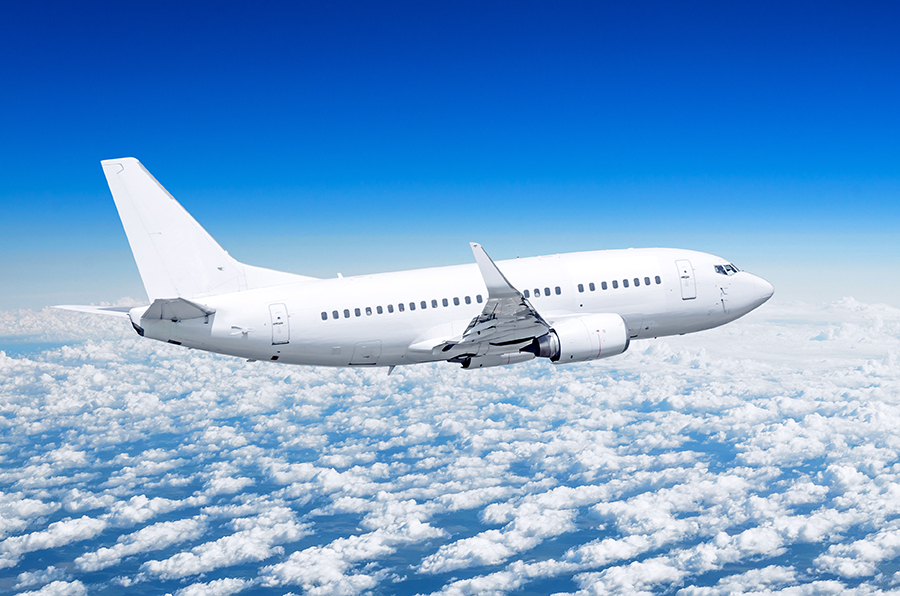
Let’s go back to our airplane on a spike, perfectly balanced under the CG. The following example will give you a great flavor of what airplane stability is and how it works.
The airplane will rest with its wings level, perfectly horizontal. It is balanced.
Understanding ‘Moments’
Now let’s attach a small thread to the wing’s upper surface (representing the center of lift), just ahead of the CG. What would you expect to happen if you gave it a little pull?
That’s right, the nose will move up! Or, to put it in really technical terms, the center of lift has created an upward moment, causing the longitudinal axis to move about the lateral axis through the center of gravity.
Fancy!
However, don’t get bogged down in technicality. Instead, consider this…
Let’s ask you a question…
What do you think would happen if you attached the thread further away from the pivot point?
The nose-up effect created when pulling the thread would be greater! We call this effect a moment.
In the simplest terms, a ‘moment’ measures how a force causes something to rotate around an axis.
And, you need to remember this…
The further the force from the center of gravity, the greater the moment and the greater the effect from a defined force.
Let’s continue with our spike and thread…
How Airplane Balance Works – The Combination of Moments
Imagine our thread (or center of lift) is attached just ahead of the wing, and we give it a big pull. This represents what actually happens on real aircraft. (After all, wings do generate a lot of lift). That’s quite a big moment that will create a big movement.
However, we attach another thread to the tail. This is a long way from the CG. Every time we pull the thread near the wing, we also give the thread near the tail a little pull too.
What do you think happens?
While our ‘pull’ at the tail isn’t as big, the distance from the CG is greater.
As we saw above, the greater the distance, the greater the effect. So, while our ‘big’ pull near the wing has an upward pitching effect on the airplane’s nose, it is perfectly balanced in a downward direction by the moment created by our pulling on the tail.
The airplane will remain stable if you can always balance the moments created at different points.
In essence, this is exactly what airplane stability is. The tailplane offsets the rotational force created by the moment caused by the center of lift being in a different position than the center of gravity.
Now that you understand what is happening, let’s look at different types of airplane stability…
Positive, Neutral, or Negative – The Different Types of Airplane Stability
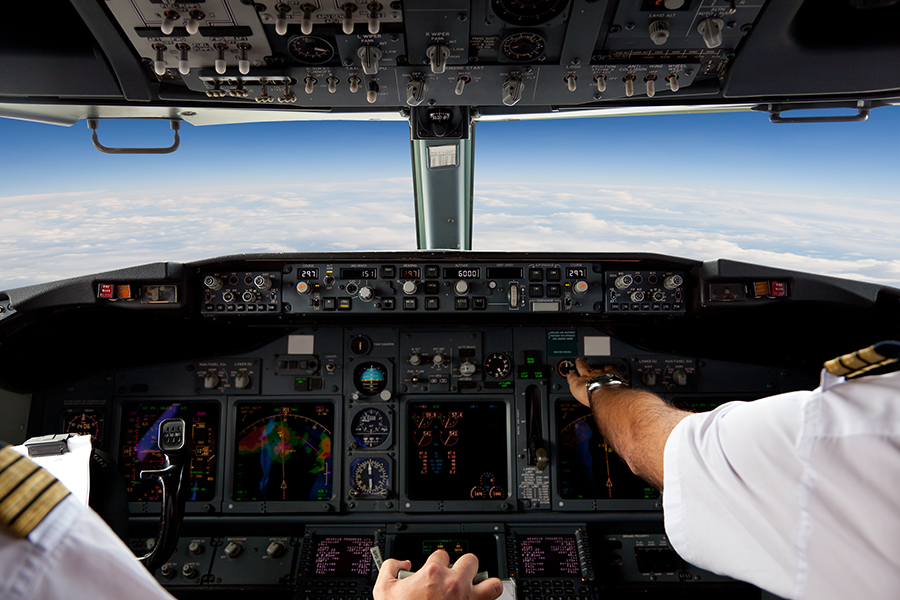
There is more to airplane stability than simply saying stable or unstable. In fact, there are six different types.
Here at Pilot Institute, we like to make learning about flying easy. So, we’ll discuss the airplane’s stability and then give you a simple conceptual idea to help you really grasp it. Here are the types of aircraft stability and what they mean:
Positive Airplane Stability
In simple terms, ‘positive airplane stability’ means that, when disturbed, the airplane will recover back to its original state. Suppose turbulence, or another force, causes the airplane axes to move, in either pitch, roll, or yaw. In that case, an inherent correcting moment will cause the airplane to return to its original attitude.
An Easy Way to Understand Positive Airplane Stability: –
Imagine a golf ball in a large deep bowl. Regardless of what you do with the ball, it will eventually roll back to the middle of the bowl and return to its original state. This is a great representation of positive airplane stability.
Neutral Airplane Stability
‘Neutral airplane stability’ describes a situation where it will deviate from what it was doing when the aircraft is disturbed. However, when the disturbance is removed, the aircraft will stay in the new state caused by the disturbance. It won’t recover to where it was, but it won’t deviate any further.
An Easy Way to Visualize Neutral Airplane Stability:
Imagine a stationary golf ball on a perfectly flat table.
This is its established state.
Let’s give the golf ball a little push, simulating a disturbance.
The ball will move and begin to roll. Ignoring friction (which would, in fact, lead to positive stability), the ball will continue to roll away in the direction you pushed it, neither accelerating nor decelerating.
Provided no other force is applied, the ball will be in a constant new state that is different from its first state, but that state will remain steady. This is neutral stability.
Negative Airplane Stability
Negative airplane stability is where the airplane will not resist a disturbance and will continue to deviate further and with greater magnitude from its original position.
Wait, why would you want an unstable aircraft?
Well, increased maneuverability for starters.
Fighter jets are designed to be inherently unstable. The last thing you want while performing evasive maneuvers is an airplane that starts flying straight and level. You’d get shot down! In the case of airplanes like the F16 Falcon, the airplane is actually controlled by computers to help make its instability more manageable!
A Quick Look at Negative Airplane Stability
Let’s take our golf ball to the top of a very steep and windy road and let it go. Without much force at all, the ball will begin to increase its speed, and it will also diverge massively in direction. It will move further and further away from its original state. This is negative stability.
So, there are three types of airplane stability…
But, wait…
We said there were six?
Yes indeed. The above stabilities are both applicable in the case of static and dynamic stability.
What’s the difference?
It’s all to do with time and amplitude…
Static Airplane Stability Vs. Dynamic Airplane Stability
All of the above descriptions of stability can be either static or dynamic. The difference is small but significant.
Here’s what each means: –
Static Stability
Static airplane stability is the initial and short-term response to a disturbance of the aircraft’s trajectory. Note we said initially. How the aircraft behaves when first disturbed is a measure of its static stability. Three things can happen: –
- The airplane resists the disturbance and will return to its original attitude, called positive static stability.
- The airplane remains in the new attitude but doesn’t diverge, called neutral static stability
- The airplane diverges further and further from its original position. This is called negative static stability.
Aircraft can be stable in their initial response yet still unstable over time. It is perfectly feasible to have a statically stable yet dynamically unstable airplane.
Speaking of which…
Dynamic Stability
Dynamic stability measures what the airplane does after the disturbance is removed. The airplane’s initial response may be to try and recover its original attitude. However, how soon and well it achieves this determines its dynamic stability. There are three possible outcomes: –
- The airplane settles and recovers its previous attitude. In this case, it has positive dynamic stability.
- The airplane continues on its new trajectory and settles. In this case, it has neutral dynamic stability.
- The airplane may attempt recovery, but the divergence grows greater and greater. As a result, the aircraft is said to have negative dynamic stability.
The best way to think of all the above scenarios is as ‘waves’.
In the case of positive dynamic stability, the waves may start large, but they then reduce in magnitude. Regarding neutral dynamic stability, the waves stay at the same magnitude. And finally, in the case of negative dynamic stability, the waves will grow larger and larger with each cycle.
Instead of waves, imagine viewing an aircraft from the side as it climbs and descends as a result of, say, turbulence. The path the aircraft draws through the air will mirror the ‘waves’ described above!
What Affects Aircraft Stability?
There are plenty of factors that will affect airplane stability. Generally speaking, several factors interact together. These can include: –
- The position of the center of gravity
- The airspeed
- The angle of attack
- The location and position of the center of pressure
- The shape of the wings
- The angle of the wings relative to the body
- The location of the wings
- The position of the horizontal tailplane (also called a stabilizer)
- The position of the center of thrust
How Do Airplanes Maintain Stability?
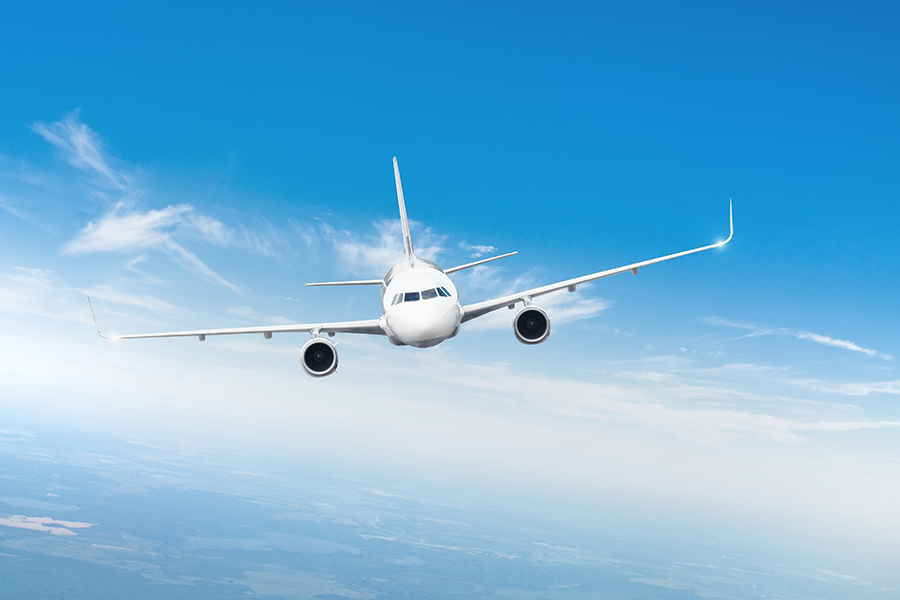
Airplanes maintain stability in several ways. The center of gravity and its position are vitally important in ensuring that the airplane remains stable through all phases of flight. This normally is achieved by ensuring the CG is kept within set limits relative to the tailplane and the center of lift.
Remember, the center of gravity forms the ‘pivot’ upon which a ‘moment’ is imparted on all three of the axes described above. The longer the pivot, the higher the moment.
If the center of gravity is placed too close to a balancing force, there may not be enough force to stabilize the airplane. Likewise, suppose the center of gravity is far from the force. In that case, the airplane may become too responsive and twitchy, making it very unstable!
In extreme circumstances, the airplane may be entirely out of balance, meaning the force generated by the tailplane may exceed that created by the center of pressure.
How to Ensure Aircraft Stability
The easiest way to ensure that your aircraft remains stable is to use a load sheet to calculate the position of the center of gravity. Most aircraft manufacturers will provide a load sheet that can be easily filled in. This will show, in pictorial form, the position of the center of gravity. Your airplane should stay stable if you don’t go ‘outside the envelope’.
Each aircraft manufacturer will provide different requirements to ensure that their aircraft are balanced at all times. However, if you are interested in the general theory behind it, the Federal Aviation Administration provides a detailed guide to weight and balance. It’s well worth a read!
Final Thoughts…
Provided you don’t overload your aircraft and are aware of the limitations of your aircraft, ensuring aircraft stability is relatively easy. You’ll find that most aircraft you train on are designed to be super stable, giving benign handling characteristics. You’ll want to be prepared if you are thinking about flight training. Our free flying course is a great place to start!
